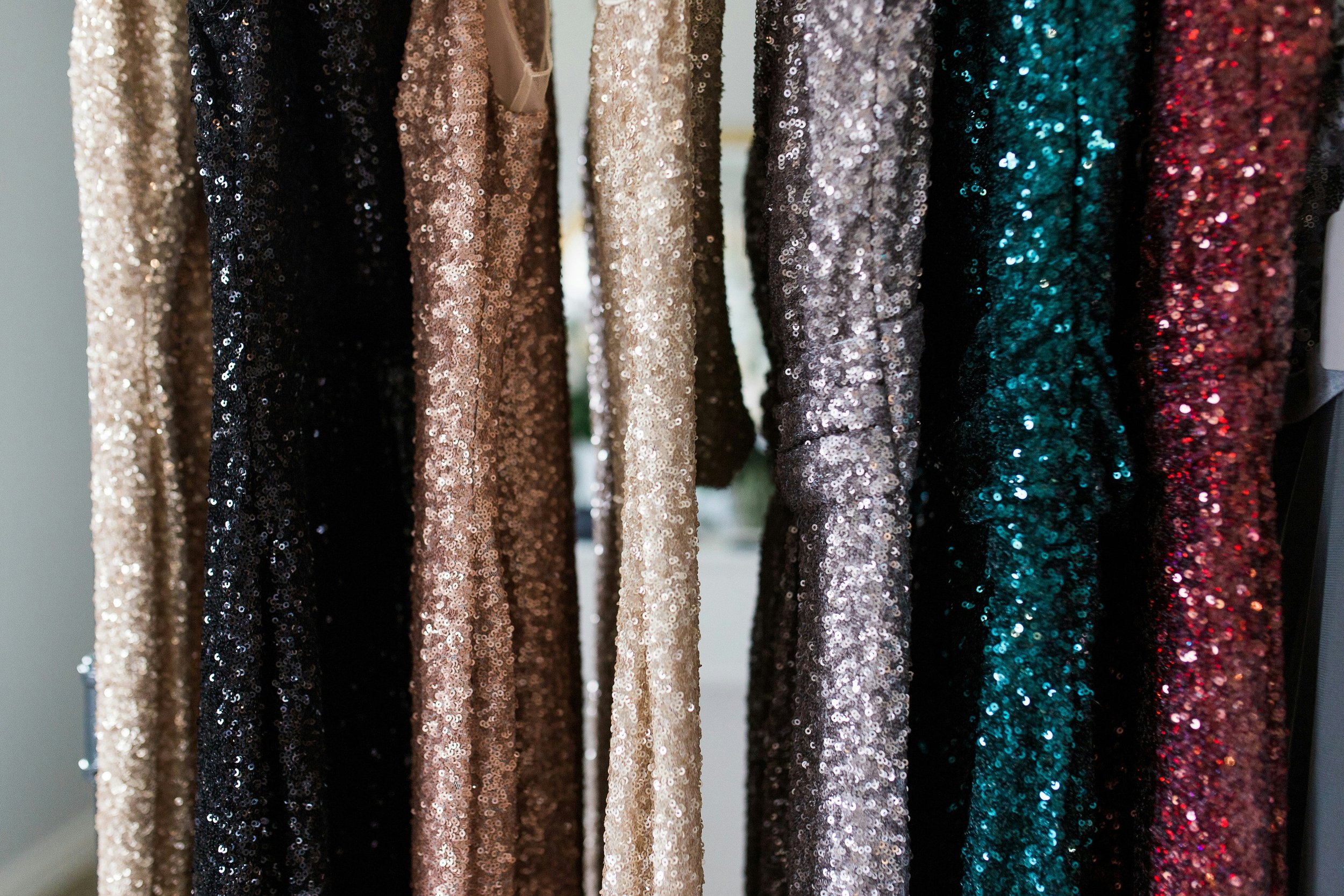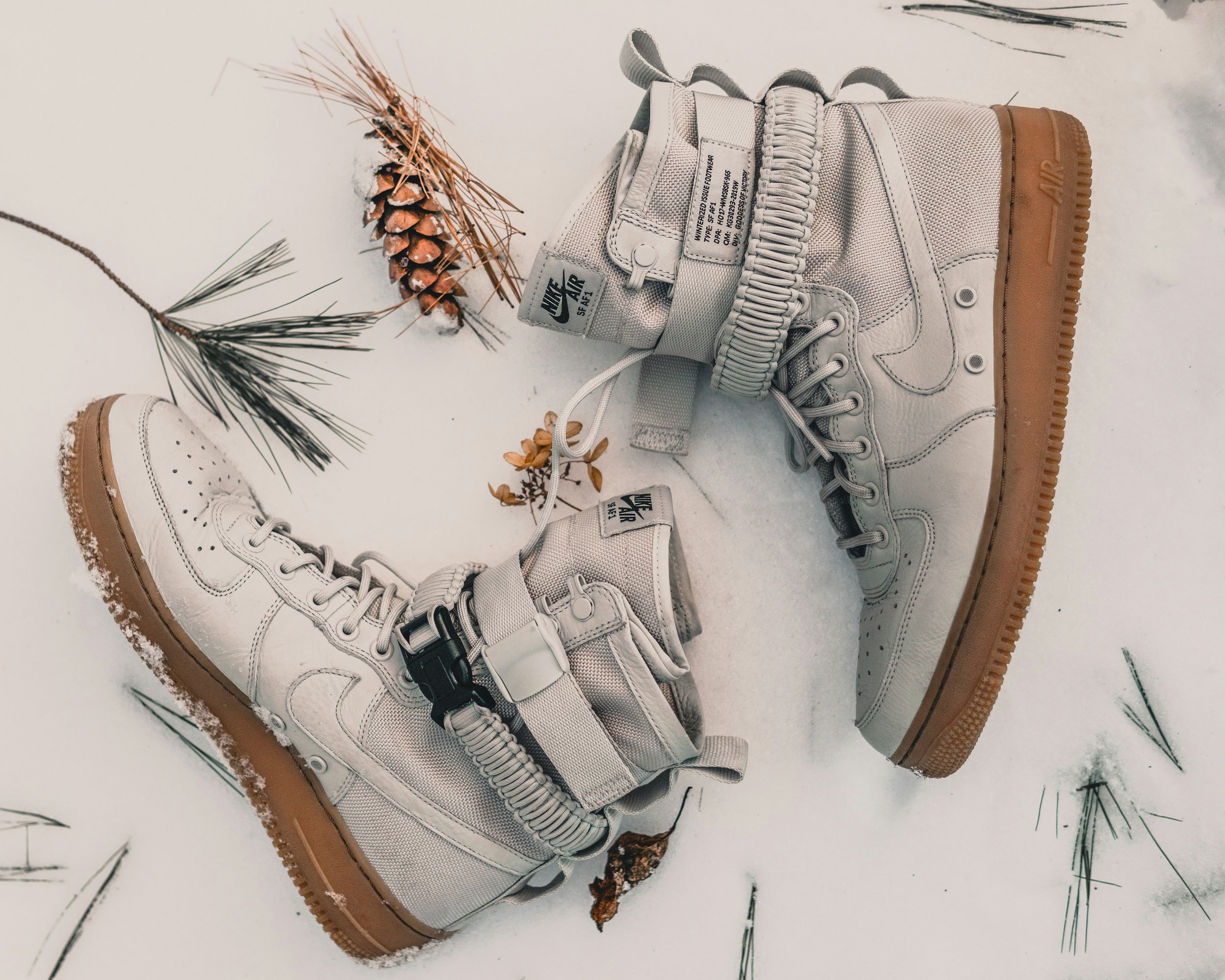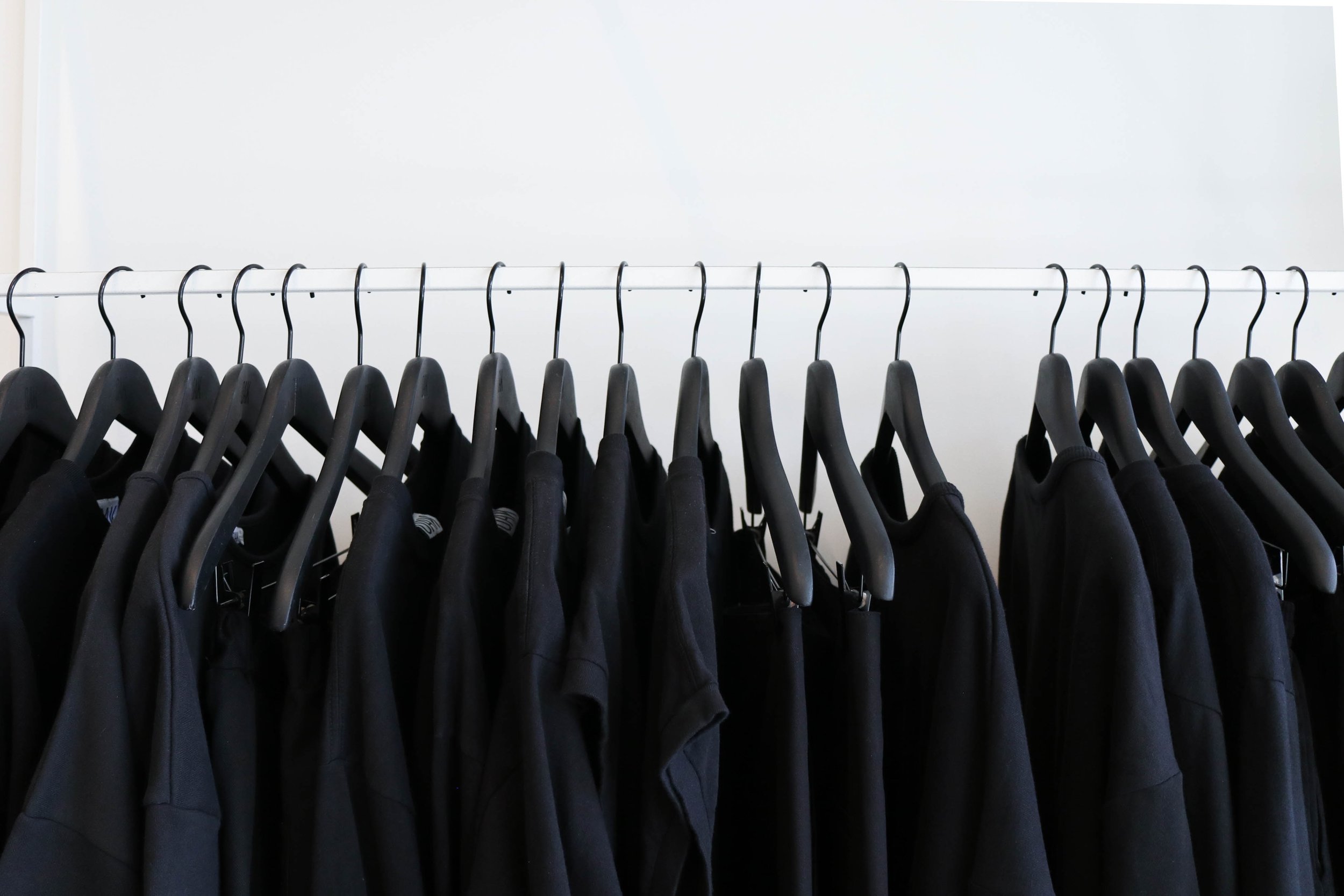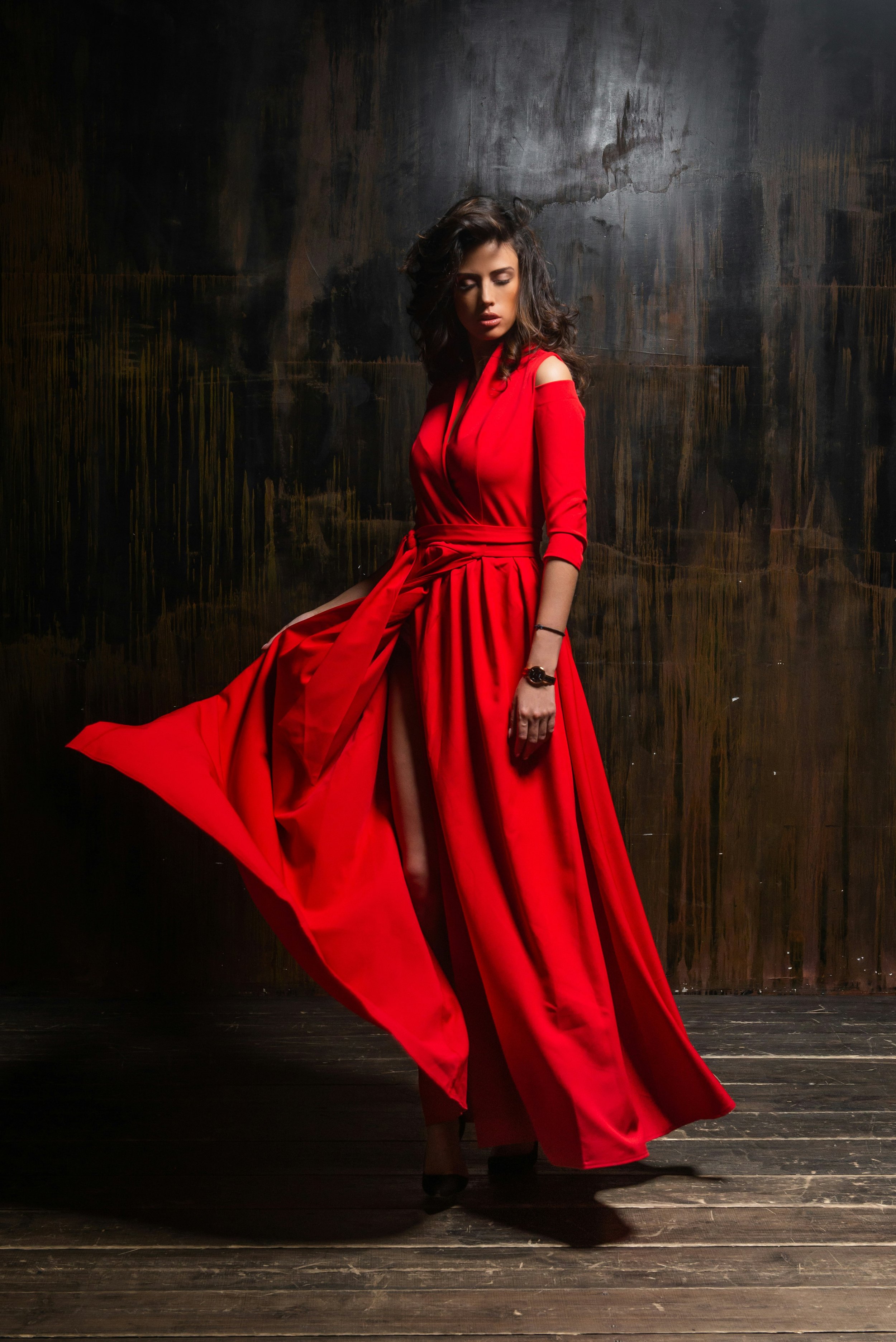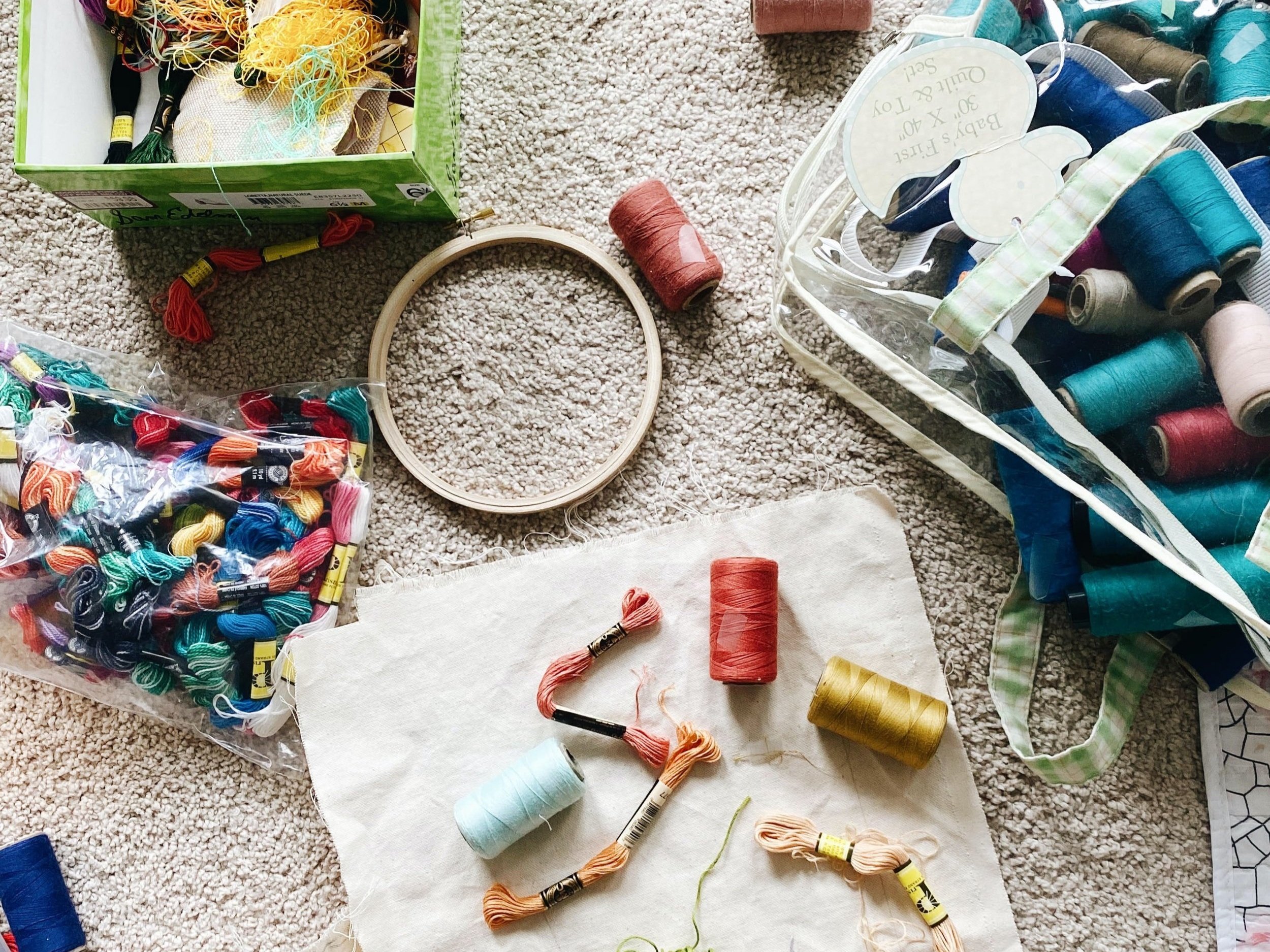Party season is here and it can be easy to get tempted by shiny fast-fashion solutions to the question “what shall I wear?” At the other end of the spectrum, it can be frustrating to wear the same outfits over and over.
Photo by Khaled Ghareeb on Unsplash
But with a little time, a wardrobe audit and a few sustainable additions, you can easily pull together the clothing you need to help you look good and feel good on every occasion.
Photo by Adriano Gonçalves on Unsplash
Our How to Guide walks you through the process of curating a mini-capsule wardrobe and suggests some garments to include. Check out our other guides for more info on each step.
Photo by Khaled Ghareeb on Unsplash
1. Shop Your Wardrobe
Before shopping, check what you already own. Rediscover hidden gems, reimagine outfits, or revive past favourites with a fresh twist using accessories or layering
Photo by Adrienne Leonard on Unsplash
2. Borrow or Swap
Consider borrowing outfits from friends or family. Hosting a clothes swap party is a fun way to refresh your wardrobe while keeping it budget- and eco-friendly.
Photo by Marcus Loke on Unsplash
3. Rent for the Occasion
For statement pieces or one-off events, renting is a sustainable option. UK-based online platforms like Hurr, By Rotation, and My Wardrobe HQ offer stunning festive options without the commitment.
Photo by Caitlyn Wilson on Unsplash
4. Shop Second-hand
Visit charity shops, vintage boutiques, or online platforms like Depop, Vinted, or Oxfam Online. You’ll find unique, affordable pieces that reduce fashion waste.
Leeds City Centre shop Tråd Collective sells a fabulous range of second-hand and up-cycled clothing and accessories – as well as sustainable brands like ours!
Photo by Yunming Wang on Unsplash
5. Invest in Timeless Pieces
If buying new, choose versatile items made from sustainable materials. Look for brands with ethical practices like ZARAMIA AVA, People Tree, Thought Clothing, or Reformation. Prioritise quality over quantity.
Photo by Andrey Zvyagintsev on Unsplash
6. Accessorise Creatively
Transform simple outfits with bold accessories. Use jewellery, belts, or scarves to refresh your look. Supporting local artisans or small businesses adds an extra layer of sustainability.
7. DIY and Upcycle
Get crafty by customising older outfits. Add embellishments, tailor for a better fit, or combine pieces for something entirely new.
Photo by J Williams on Unsplash
8. Think Footwear and Bags
Opt for versatile shoes and bags that pair with multiple outfits. Secondhand shops or sustainable brands like Will’s Vegan Store, Vivaia or Bhava studio are great for finding ethical options.
Photo by Moreno Matković on Unsplash
9. Avoid Fast Fashion Trends
Stay true to your personal style. Trend-led purchases are often low-quality and wasteful. Instead, focus on timeless elegance or vintage charm.
Photo by Sanira Askerbekova on Unsplash
Here’s one take on the festive capsule wardrobe to get you started.
Check what you have in your wardrobe, substitute similar items and consider buying a few pieces from sustainable brands.
Photo by Yemi Wallington on Unsplash
1. The Little (Black) Dress
A classic LBD is endlessly versatile but why not break out and choose another neutral colour that you love. Opt for a style with clean lines, such as an A-line or wrap dress, made from sustainable materials like organic cotton, Tencel, or recycled polyester. Dress it up with statement accessories for formal events or layer it with a jumper for casual gatherings.
Photo by Anastasiya Badun on Unsplash
2. Stylish Trousers
Invest in high-quality trousers in a neutral tone like black, navy, or dark green. These can be paired with festive tops, cosy knits, or a jacket for an elegant yet comfortable look. Look for brands using deadstock or recycled fabrics.
Photo by Diego Nagem on Unsplash
3. Festive Top
Whether you like to make a statement with sequins or prefer something a little more subtle, a festive top can add sparkle to your capsule wardrobe. Choose an ethically made option in gold, silver, or jewel tones that complements your trousers or skirts. Rewear it with different bottoms to create unique looks.
Photo by hanen souhail on Unsplash
4. Midi Skirt
A flowing midi skirt in a luxe fabric like velvet, satin, or recycled polyester adds a touch of glamour. Opt for a neutral shade (black, champagne, or burgundy) or a bold print to make a statement. Pair it with a knit jumper for daytime or a sequined top for evening events.
5. Statement Outerwear
A bold coat or jacket is essential for staying warm and stylish. Choose a longline coat or a faux-fur cropped jacket made from recycled materials. A piece in a festive colour like deep red or forest green can double as a statement item.
Photo by oo verthing on Unsplash
6. Versatile Knitwear
A soft, neutral knit jumper in cream or grey is perfect for layering. Look for sustainable options made from organic cotton or recycled yarns or go second-hand. Layer it over dresses or pair it with trousers for casual gatherings.
7. Sustainable Shoes
• Block-Heel Ankle Boots: Great for outdoor events or when you’re on your feet for hours.
• Elegant Flats or Heels: A metallic or velvet pair can add a festive touch to any outfit.
• Sustainable Trainers: Perfect for casual parties or travel days. Brands like Veja or Allbirds offer stylish and eco-friendly options.
Photo by Klara Kulikova on Unsplash
8. Accessories
• Statement Jewellery: A pair of bold earrings or a chunky necklace can transform any outfit. Support local artisans or look for vintage pieces to keep it sustainable.
Photo by Oladimeji Odunsi on Unsplash
• Festive Clutch Bag: Opt for a recycled or upcycled design, or choose a versatile bag in metallic tones.
Photo by ONNE Beauty on Unsplash
• Belts: A chic belt can cinch a dress or add flair to your trousers or skirts.
Photo by Social Envy on Unsplash
Outfit Ideas with This Capsule:
1. LBD + Statement Jewellery + Heels: Classic evening look.
2. Midi Skirt + Knit Jumper + Ankle Boots: Cosy yet chic for a daytime event.
3. Stylish Trousers + Festive Top + Block-Heel Boots: Sophisticated yet comfortable.
4. Knit Jumper + Midi Skirt + Statement Earrings: Casual with a festive touch.
Photo by Andrey Zvyagintsev on Unsplash






